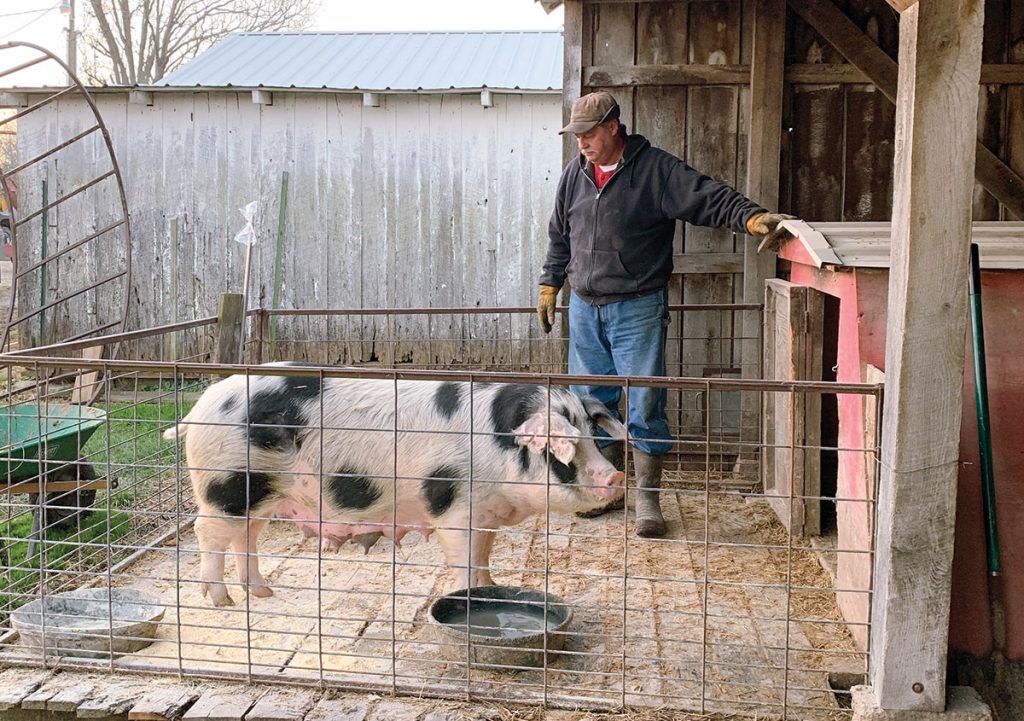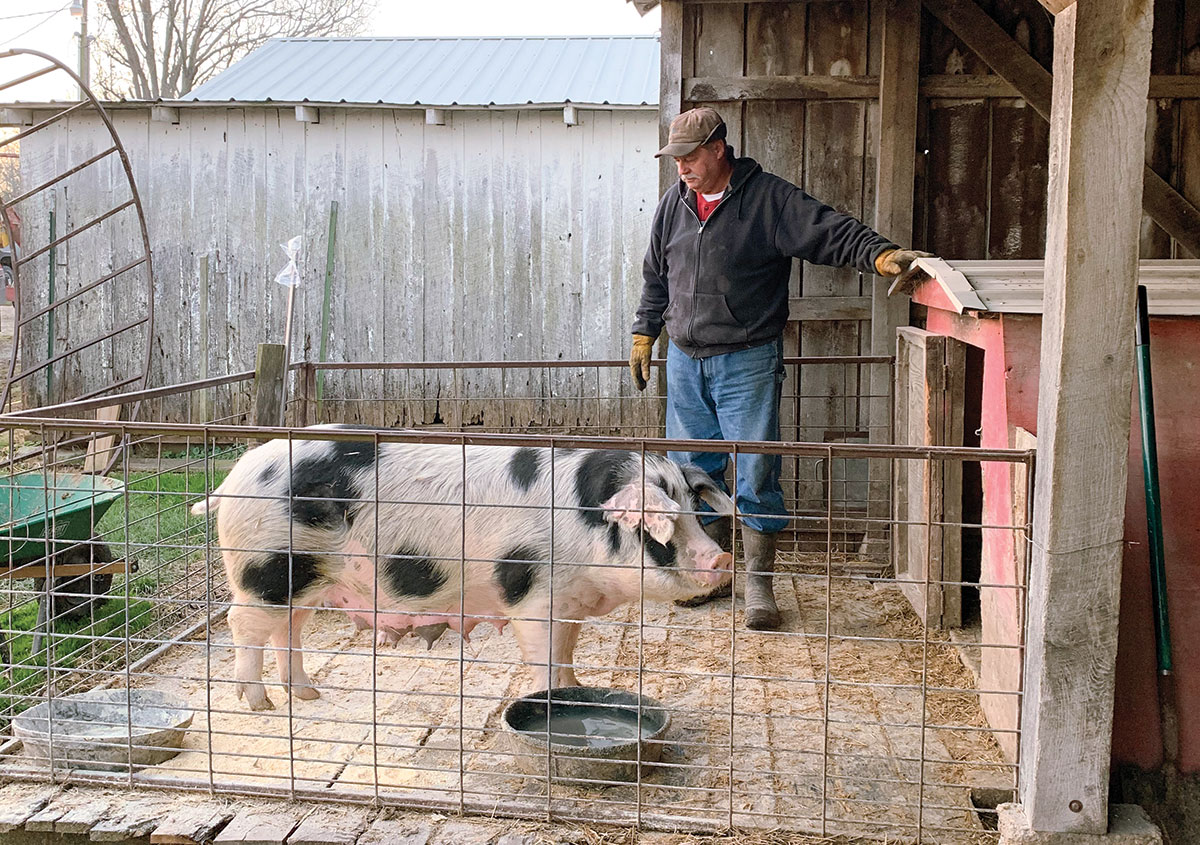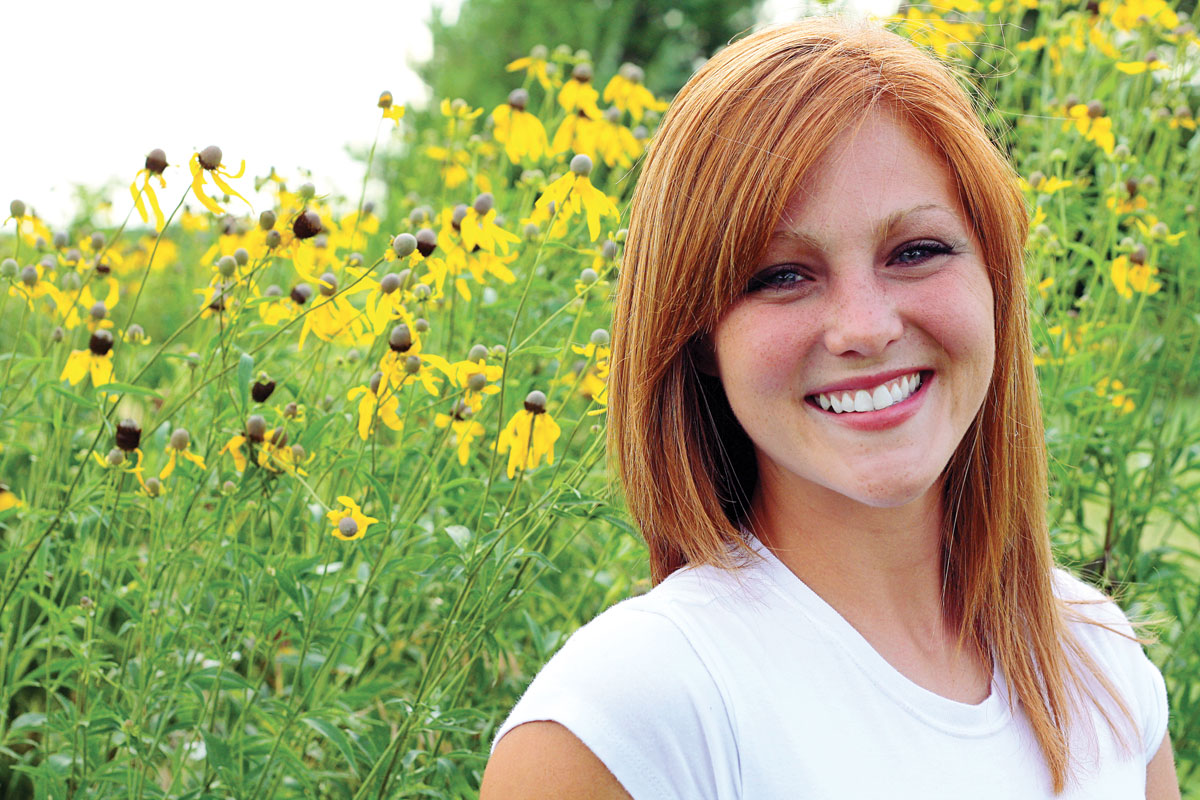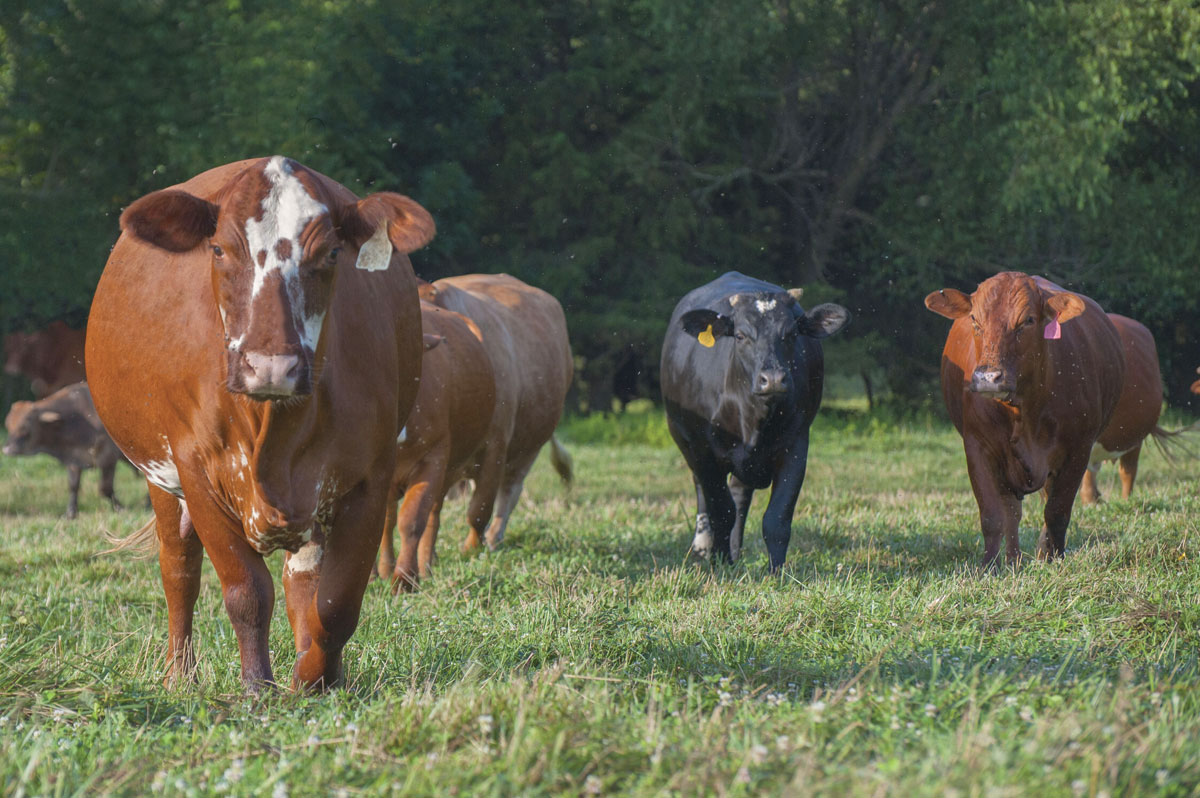
Dan Dryer begins marketing farm-raised pork with Spot On Meats
By the time he was a teenager, Dan Dryer was in the swine business.
“I bought my first hogs when I was 12, and I’ve had hogs ever since,” he said. “I paid for college by selling feeder pigs at the old feeder pig barn (MFA Tel-O-Auction) in Buffalo.”
When he started raising pigs, Dan wanted to hold annual production sales, just like some of the breeders he admired. That market, unfortunately, didn’t fare well, but he kept raising hogs. He and his wife Debby also milked cows and built a commercial beef herd, in addition to careers in education at the Dallas County R-1 School District.
As they began to think about their retirement plans, the swine operation took a new turn – Spot On Meats.
Dan has long offered half and whole hogs to customers, but with Spot On Meats, customers can purchase the individual cuts directly from the Dryers.
With the new business plan came a few changes to his operation, but producing a quality product remains the goal.
“I’ve had to shift more towards trying to have litters every month,” Dan said. “Years ago, I tried to have December, January litters because I was selling a few fair pigs. Fair pigs are a different kind of hog, and that doesn’t interest me. I’m on the production end of it.”
For the last several years, Dan’s breeding program has been predominantly AI, thanks in part to a lack in availability of quality service-age boars. However, the viability and expense of semen is a another limiting factor.
“Pig semen isn’t frozen,” he explained. “You have to get it shipped overnight, and that’s $100, not counting the semen. That’s not going to work for the market I’m in. I have a Duroc boar now, but I’ve had to shift that a little. My favorites now are Spots.
They grow very well, and the sows will lay down, have pigs and are excellent mothers. When you pull those pigs off, in four to six days, sows will come into heat. I would call them one of the predominate producer-driven breeds.”
Dan is currently working with long-time Spot producer Frank Raasch of Norborne, Mo., who is working to identify specific “fat” genes.
“We’ve bred these hogs too lean for so long that there is no fat,” Dan said. “If you don’t have any fat in pork, you don’t have flavor. I don’t want a fat, roly-poly pig; I want a pig with some fat. I never owned a Spot hog in my life until two years ago, and I like them. “
The Duroc/Spot cross is producing the type of animals Dan wants.
“They are producing pigs that work,” he said, adding that the Spot genetics keep his six-month farrow-to-finish goal achievable. “That growth factor is what I like. Our hogs are dressing a little over 72 percent and are doing what I want them to do.”
Dan said Spots can have their first heat cycle as young as 4 months of age, but early breeding can impact a gilt’s longevity.
“I run gilts next to a boar for at least two months before I breed them to help them cycle,” he explained. “If they aren’t cycling, I won’t try to breed them. I don’t want them to have a litter before they are a year old. They will continue to develop reproductively, and she’s still growing. If she’s bred, she will start feeding that uterus and not growing herself. When you pull pigs off, and they don’t cycle quickly, you know something is going on. I want them old enough and big enough to go again when I pull that first litter.”
Litters are weaned at 3 to 4 weeks, but timing can vary depending on weather conditions and other factors.
“If you can get them eating just a touch of feed before they are weaned, they take off,” Dan said. “They make that transition quickly. Getting the litters off the sows is also better for her.”
The right feed is also key to the Dryer operation. The pigs eat the same feed from day one until they are finished. They eat feed Dan grinds and mixes, but the protein and ammo acid level in the feed is adjusted based on the age and weight of the pigs.
“To me, you have to feed a consistent product,” he said. “If you buy something from me and you take it home and like it and you buy more, but it tastes different, you aren’t going to buy it again. I want to stay consistent in my genetics and in my feed, so my product is consistent.”
A quality-nutrition program also keeps the sows healthy, which allows them to breed back with ease and have larger litters.
“Feeding, next to vaccinating, is the cheapest thing you can do to have quality animals and meat,” Dan said. “Good nutrition avoids a lot of questions about antibiotics. If you have your nutrition right, it takes care of it.”
Sows and boars at the Dryer farm are vaccinated twice a year to protect them from diseases such as parvo, Lepto, erysipelas and rhinitis. Two to three days after birth, piglets receive an iron shot, followed by an erysipelas and rhinitis vaccination.
“If they go into the market pen, that’s all they get,” Dan explained. “If they go into the keeper pen, they will get the same vaccine as the sows, it’s all about herd health.”
Spot On Meats offers no claims of being organic, pasture-raised or certified in any way, but Dan does promise customers are getting high-quality, farm-raised meat.
“I can guarantee, 100 percent, what they are eating was born on my farm, fed on my farm and raised on my farm,” he said. “I know what it was fed and how it was raised.”
Pigs selected for individual cut sales are processed at Tom’s Meat Market and Processing in Camden County, Mo., which is inspected by the USDA and the Missouri Department of Agriculture.
Unfortunately, the pandemic has caused a bit of a backlog not only for inspected pork but for the whole and half sales.
“As I sold hogs, I might make (processing) appointments 45 days in advance,” Dan said. “Now, I had to book appointments 18 months in advance. It’s hard to plan when you don’t know what’s going to happen in the future. It’s going to be a slow process for my meat-by-the-cut business to grow, but the people I do business with are 100 percent return customers. Over the next year and a half, it will grow, and I will know better how to plan. I’m not looking to sell something in the pretty box; I want to sell high-quality products that people take home and feed their family.”
In addition to pork, the Dryers are exploring the addition of offering beef to customers.
“With beef, it becomes an issue of storage and costs a little more, but beef is popular,” he said. “I eat more beef than pork, so we’re going to dabble in that and see how it works. I’m trying to do what I would want if I were someone looking for meat to buy from a farm that raises their own.”
Spot On Meats can also be found at the Cheese Hollow Market in Bolivar, Mo., in addition to direct-from-the-farm sales.
As the business grows, Dan hopes to expand beyond the dozen breeding females currently in production.
“I have a nice farrowing barn with heat, water and whatever we need. If it doesn’t work, I’ve still got 49 Holstein heifers, and I still have all of my equipment,” Dan said with a laugh and a smile. “My wife doesn’t like that idea and just says she’ll take care of the calves. I’m not ready to be done farming. Farming is something that has to be inside of you. You can’t just wake up and decide that’s what you’re going to do.”







